Final Fantasy 7 Rebirth Review
Final Fantasy 7 Rebirth is a fine game that's mired in fluff that's in no small part there to service stretching the story across so many titles.
While I’ve been very vocal about disagreeing with not only how Square Enix decided to split this remake up into so many multiple parts but also what they’ve changed, I can respect that they’re at least committing to the bit. Going into Rebirth after Remaster and Intergrade then, I was intrigued with how they would tackle what would have to include some form of open world areas and how they would stretch probably the thinnest narrative section of the original out into its own game. Perhaps more than that, I was interested in how much farther nostalgia would help carry my own personal experience and how much the game would be able to stand on its own feet for those who came into it not carrying nostalgia with them at all. Tifa in a bikini being justified promotional material was on the line, too, if we’re being honest with ourselves.
Final Fantasy VII Rebirth picks up where you left off…sort of. The familiar opening notes of the iconic Bombing Mission theme swell. A panning shot over the now collapsed Sector 7 Plate reveals a roughed up but nevertheless very much living Zack Fair dragging a much less lively Cloud Strife back toward what’s left of the slums, catching a glimpse of the casualties via a news report along the way. The Bombing Mission theme activated some locked away part of my brain like a fire axe case that reads “Break In Case of Dopamine Emergency.” It can’t be overstated how unimaginably vital Nobuo Uematsu’s original music is to Final Fantasy VII’s identity, even more so as it informs the wonderful work of Masashi Hamauzu and Mitsuto Suzuki. Just as quickly, however, I’m yanked out of sentimentality and into the vaguely familiar yet alien new narrative Square Enix’s reimagined Final Fantasy VII presents. This back and forth would happen many times across my well over 100 hours of play time and while the new provided occasional highs, many of those highs rested heavily upon the shoulders of the old.
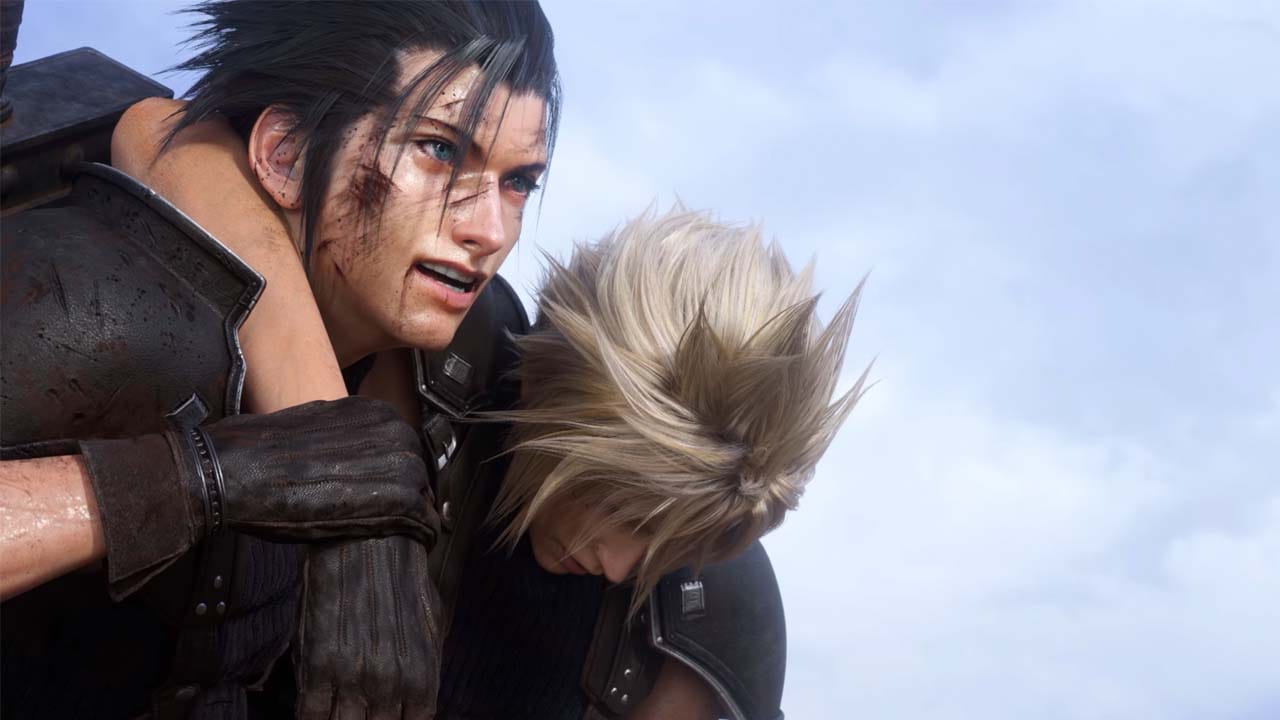
Throughout my time with Rebirth, I couldn’t shake the feeling that Square Enix, despite clearly wanting to do something different from the original release, squandered the opportunity to capitalize on it in full. So much of how Rebirth’s narrative plays out works best if you go into it having played the original and this is doubly so when it comes to character interactions. Much of this is because Final Fantasy VII’s original story and characters served a significantly shorter game. Pacing in the original makes up for less depth – it can get away with simplicity. This new series (and it is a series, now) isn’t afforded the same pacing. On the contrary, a 50-to-70-hour game has been stretched well beyond its limits to fill what will become nearly 200 hours of mainline questing by the end of it all. A positive, nostalgic attachment is then remarkably impactful when it comes to character and story payoffs that are otherwise unearned due to the passage of time between these beats, not to mention the years in between releases.
As we move through the story in the second (or technically third) installment, it’s as surprising as it is confusing to me that Square Enix wanted so badly to change and expand upon the original story and characters but then continue to do so sparingly. Yes, they have dramatically changed the course of the narrative, and yes, they have given a bit more love to characters that weren’t afforded as much in 1997, but none of it is done in a way or to a degree that earns 200+ hours of gameplay. The writing leans heavily on literary crutches to justify most of its plot points and is a prime example of why less is often more in the sense that it overcomplicates to compensate. The character interactions are without question the main reason to play this game regardless of nostalgia, however, and I’d have given anything to have had more of that and less of a lot of the extraneous narrative nonsense that dilutes it. It’s very apparent throughout that the north star for Rebirth, like Remake before it and whatever comes next, is hitting a predetermined number of game releases more than anything else. It would be extremely difficult to justify why Remake, Intergrade, and Rebirth weren’t all just one title without masterfully dancing around the fact that much of what was included could have been left on the cutting room floor.
Rebirth highlights this even more than Remake. The vast majority of your time not spent enjoying cutscenes is spent on a never-ending barrage of minigames – some of which are irredeemably bad. Nearly everything in Final Fantasy VII Rebirth has been mini-gamified. From beginning to end you will be assaulted with on screen popups describing the ins and outs of some bespoke mechanic that gamifies everything short of walking in a straight line. This happens with such frequency and so ubiquitously that my immersion was rarely given enough time to settle in before it was interrupted to learn how to use a lore-accurate Segway scooter. It feels like Rebirth’s moment to moment gameplay came together following a single company-wide brainstorming session in which they took the concept of no bad ideas a bit too literally.
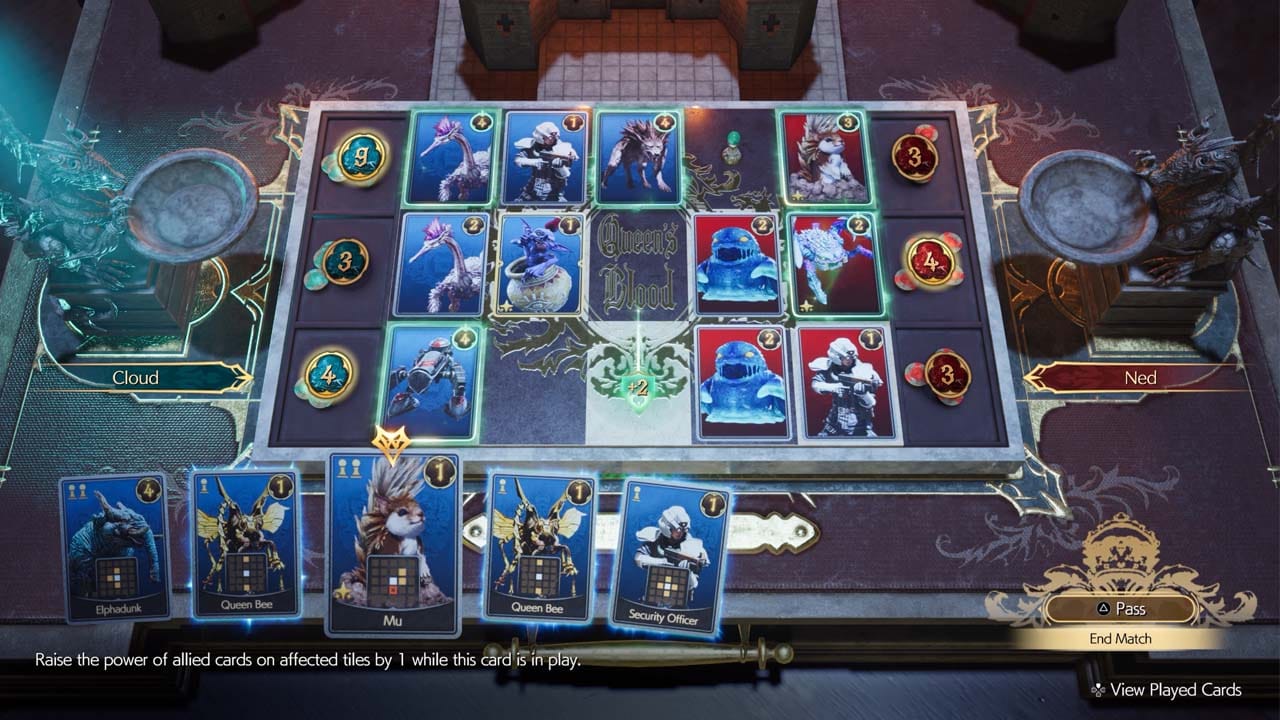
Not all the minigames are bad, of course – in fact some of them are great fun. The star of the show, and arguably the most intriguing part of Rebirth in general, is Queen’s Blood. Following the success of Final Fantasy VIII’s Triple Triad, Queen’s Blood is Rebirth’s new card game with a story all its own that provides some of the more fun and interesting moments. A mashup of tri-lane control and a host of other progression and interaction mechanics, it’s a fun distraction that I wouldn’t be surprised to see a mobile version of in the future. It’s not perfect, of course. The AI isn’t particularly intelligent in how it manages board control, and the game inherently rewards turn order more than it should, but it’s flexible and allows you to tackle opponents in a variety of ways which is nice.
With this being the point in the story in which we get to visit the Gold Saucer, old favourites return as well like the venerable Chocobo Racing which in particular received an enormous amount of attention, becoming a micro adaptation of Mario Kart. Cloud and by extension you are the jockey, now. Power-ups, shortcuts, speed boost pads, and more are all part of the show and you can even drift boost. Like your collected coin total boosting your speed in Mario Kart you’ll do the same here, though even just being bumped by an AI loses you a point at a time which can be a bit silly. Most tracks are fine, though none particularly stand out aside from a few that had to be designed by the most spiteful human to have ever lived. It’s a great update to a beloved part of the original game, and helps justify how Chocobos are handled out in the wild which we’ll get to. The Gold Saucer had a lot of love dumped into it as it takes on the mantle of centerpiece to this segment of the story. It’s chock-full of minigames which at least is expected, and at no other point does Rebirth lean harder into the anime vibe than it does in the Saucer – something that if you hadn’t adjusted to already, is the game’s best attempt at winning you over which I suspect will be successful more often than not.
I don’t know if I can get across just how much of Rebirth is minigames but to perhaps say that there’s a non-zero chance you spend more time with them than you will being engaged in combat. Depending on how you feel about Remake’s combat that might not be the worst thing in the world, because it’s much the same but with some additions bolted on that, at least in my opinion, do little but to highlight the weaknesses of the series’ combat mechanics as a whole. The awkward mashup of Final Fantasy XIII’s stagger system and a one-foot-in-the-water real-time action combat system remains the foundation. The last remnants of the ATB system are still hindered by having too many mechanics for most people to keep a satisfying flow going in many combat scenarios or at least properly engage with the combat the way it’s seemingly intended. Making matters worse, Rebirth’s combat adds a new wrinkle – Synergy abilities.
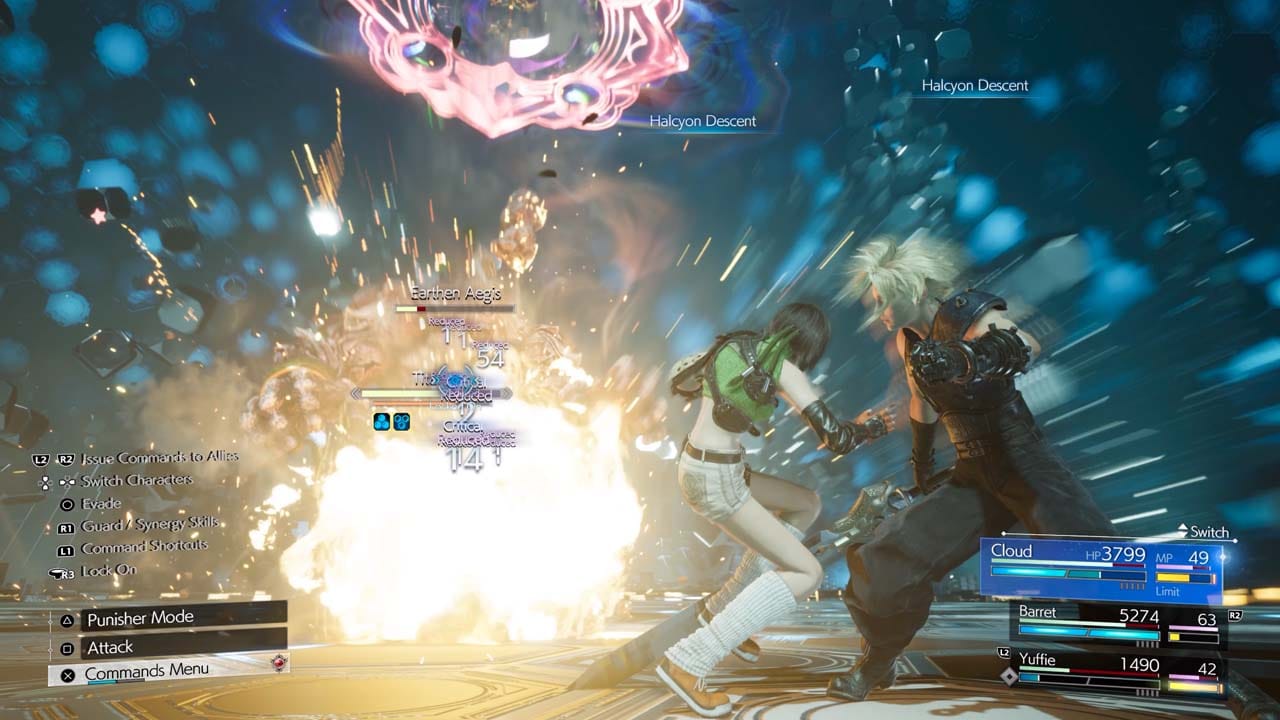
Rebirth’s levelling has been altered from Remake’s in that characters now have weapon levels as well as individual Folios – sphere-grid-like books used to unlock skills, abilities, stat boosts, etc. as you acquire points throughout the game separate from those of raw experience. Synergy skills and the new synergy abilities unlocked in the Folios are party specific and will see your characters interact with each other on the battlefield to achieve a variety of effects not limited to just doing more damage. While skills are free, synergy abilities require both participants having built up a certain amount of synergy points by having completed other actions on the field first which are noted as building synergy points if used. Many require three ability points to use which means the two characters need to have individually built up three bars each before the synergy abilities are made available. This clear incentive to switch more frequently between characters while in combat would be fine if it weren’t for the fact that old issues like the camera being a nightmare, or losing strategic advantage due to how enemy AI prioritizes player-controlled characters are holdovers from Remake.
There’s so much going on now that it’s easy for combat to feel incredibly messy. Rarely will a fight last long enough for most mechanics like synergy abilities to even be relevant, and in the fights where they are relevant, it’s not always clear that it’s any more efficient or engaging than focusing on just clearing them with a simpler rotation. Such clarity when it is applicable is unlikely to be realized due to simply not fighting many enemies enough times with the same characters to memorize attack patterns and devise highly efficient strategies. Since being team wiped is a relatively rare experience, that repetition is lost as you move from zone to zone.
When you take into consideration the impressive depth and individuality of every character’s combat style, throw in an incredibly dense number of shared mechanics, and then account for the lack of opportunities to organically master even half of what’s available to you, it’s clear that perhaps more mechanics wasn’t what Rebirth’s combat needed. Unless you’re intentionally grinding the harder scenarios in Chadley’s combat simulator, it's far more likely you’ll not be maximizing your combat abilities, and because there is little intrinsic value in doing so it’s far more likely players will never interact with the combat the way the designers would likely have hoped.
This is all unfortunate because on an individual character level, each one of them could have had their own game. The animation work is astounding, though it’s a real challenge to appreciate it when you’re in the thick of things. Having access to such a myriad of powerful and flashy attacks is nice despite it becoming a bit of visual diarrhea, however it does also take away from the feeling of using a limit break to deal a crushing blow on a difficult enemy because it all just feels the same. I think that between Final Fantasy XVI and Rebirth, XVI did a much better job at adapting Final Fantasy to the action combat system in that they focused on incorporating only what was needed and included little else which led to a much more satisfying and free-flowing experience despite its own flaws. Perhaps more than anything, XVI made you feel powerful when it was most advantageous, and I sorely missed that feeling in Rebirth. It’s to be expected that FFVII’s combat can’t do a hard right turn to more resemble something like XVI but I do think there are lessons to be learned that are transferrable without requiring them throw the whole system out the window.
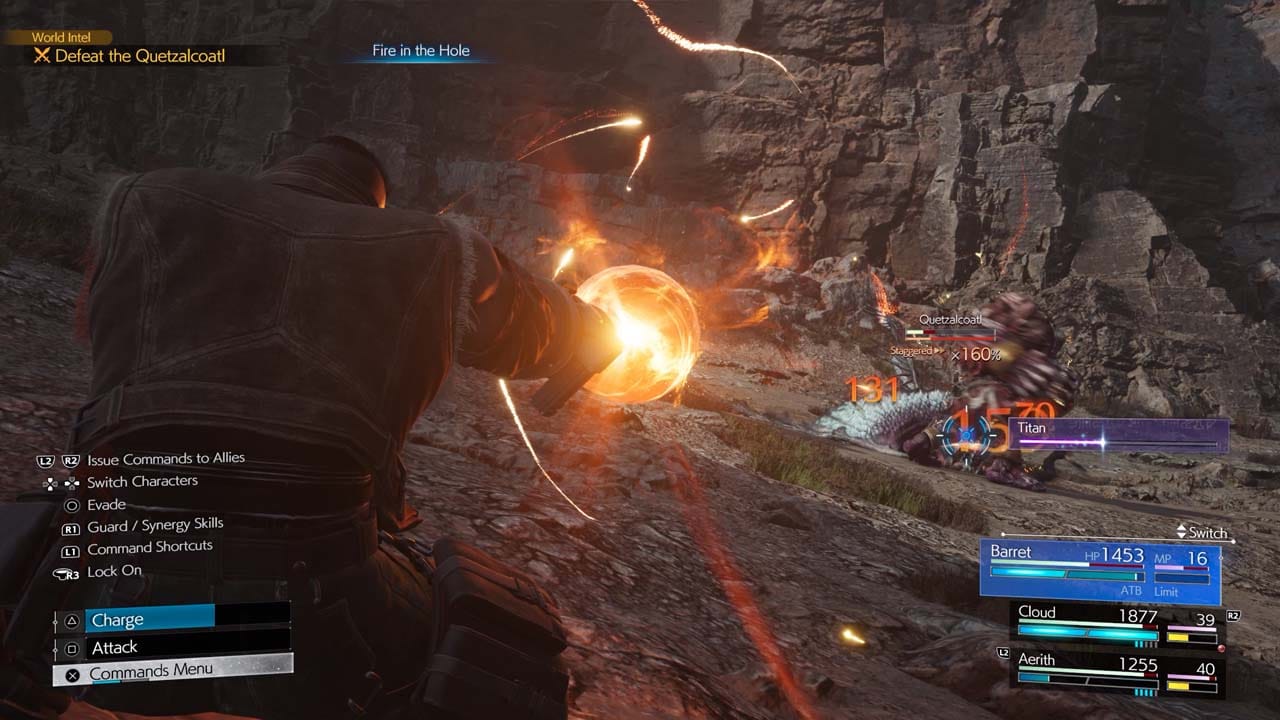
Of course, all this combat takes place in the fancy new open world that we get to explore after having been locked away in Midgar for the entirety of Remake. As I said early on, I was really interested in how they would tackle this section of the game given it represents when the player would have been exposed to the world map in the original. If I had to describe it, I would say that this is Square Enix’s take on Ubisoft’s open world concept except this time with 500% more Chadley.
The world map exposed to you is broken up into regions. Each region is littered with collectables, points of interest, and quests. The fog of war hides all of this until you’ve explored the zone, but more specifically until you’ve activated the handful of towers in each region that reveal the surrounding area’s offerings. You do this with the world’s strangest mobile-phone-gun-key-thing that Chadley provides you with presumably to ensure you remember that the real main character is actually Chadley. God help you if you weren’t a big Chadley fan before, because he’s going to be calling you every few minutes whether you like it or not. I don’t think I’ve been as annoyed by a character blowing up my phone this much since Roman desperately pleaded with me to go bowling at 9am on a Tuesday. This is mostly fine as it’s widely accepted as one of the better ways to justify the existence of an open world, and while they showed remarkable restraint compared to the icon-vomit that more recent Ubisoft games are plagued with, a lot of the side content adds little to nothing but time to an already lengthy and awkwardly paced game.
Other than side quests taking place throughout the region, each region also has commonalities that will see you doing loosely the same thing repeatedly between them. Acquiring summons, for example, is accomplished by interacting with a few points of interest in a region with one summon calling each region home. After collecting some data for Chadley he’ll make the encounter with the summon available to you in his combat simulator and should you succeed you’ll earn the materia. Other points of interest are simply region-specific bonus information which is partly given to you by – you guessed it – Chadley. You’ll also be taking on various monsters in each region to help Chadley learn more about stuff and things which then unlocks more combat simulator scenarios that can net you useful stuff like materia. Lastly, and I wish I didn’t have to talk about them, there’s the Moogles. What historically were adorable if not sometimes annoying little magical furballs, Moogles in Final Fantasy VII Rebirth are nightmare fuel that serve little purpose but to scar you for life and force you to do the same Moogle-wrangling minigame over and over again until their creepy little faces are seared into your memory forever, kupo.
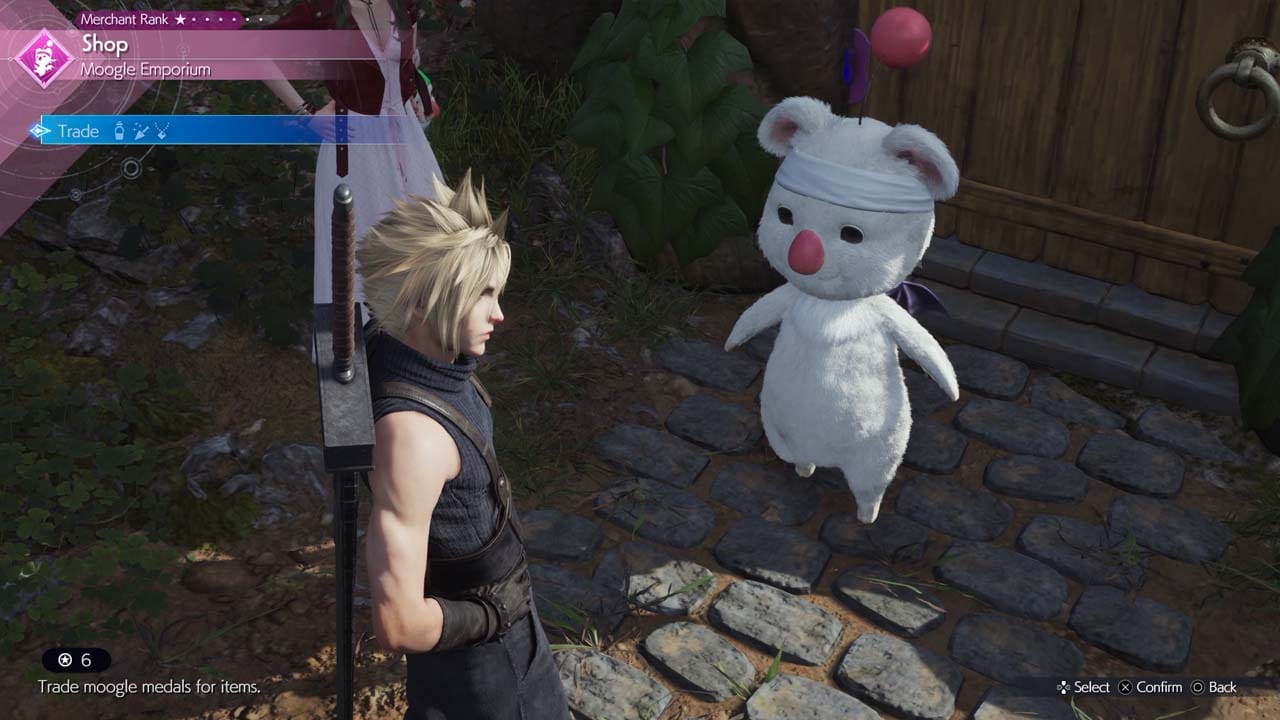
Traversing all of these regions comes in a variety of forms like you may expect should you have played the original. While you’ll be on foot a fair amount of the time, Chocobos are the primary form of travel. Chocobos aren’t bred for use like the original game, instead they are unlocked on a regional basis usually through a minigame or some other side quest. Each Chocobo is adapted to its region so you’ll be able to climb walls, glide over water, bounce off of mushrooms, or glide through the air as needed to get around. Across the zones you’ll come across Chocobo rest stops, often while escorted by a baby Chocobo that sticks close to them. Upon unlocking the stops, you’ll be free to fast travel to them as a point in the future. You’ll also be able to fully heal here by using a cushion, since Cloud’s dainty little bottom wouldn’t stand the bench otherwise. Unlocking these stops also grants you points to spend at Chocobo ranches in each region, unlocking gear for that region’s Chocobo which are also used for racing at the Saucer by providing specific bonuses.
The cushions, along with many other single use items, accessories, and key items are craftable using the new crafting system so lovingly if not precariously placed at the top of the menu. Resources for crafting are collected throughout the various zones as well as collected via side quests and other means. It gives you a reason to spam triangle to collect stuff as you traverse a zone, but crafting in Rebirth feels tacked on and rarely worth the effort. Many of the most useful items you’d actually want to craft outside of key items for quests require enough hard to find materials that you’ll likely only ever be able to craft one or two of them even if you’ve been hoovering up every item you’ve seen along the way. More items become available as you craft newly acquired blueprints, but this system never amounts to much more than a place you accidentally engage with thanks to it being placed as the first item in the menu.
That’s sort of a really apt analogy for Final Fantasy VII Rebirth. The whole game is just littered with…fluff. The segment Rebirth represents from the original game was, in fairness, also very much some mini games and minimal narrative progression outside of collecting some new friends along the way. The difference, of course, is that it was only a part of a single game and not beholden to carrying an entire 50 to 100+ hours of content on its own. Even though I’m not the biggest fan of the direction they’ve taken, there’s a lot of really great and endearing moments in Rebirth that are unfortunately buried under a mountain of unnecessary bloat that, at least for me, made it far harder for me to give a damn about the story beyond getting to see the characters interacting with one another some more. I could do without the barely justifiable relationship meters, and one of the characters swerves so hard I got whiplash, but otherwise the fantastic performances from the main cast are at the very least nostalgic euphoria.
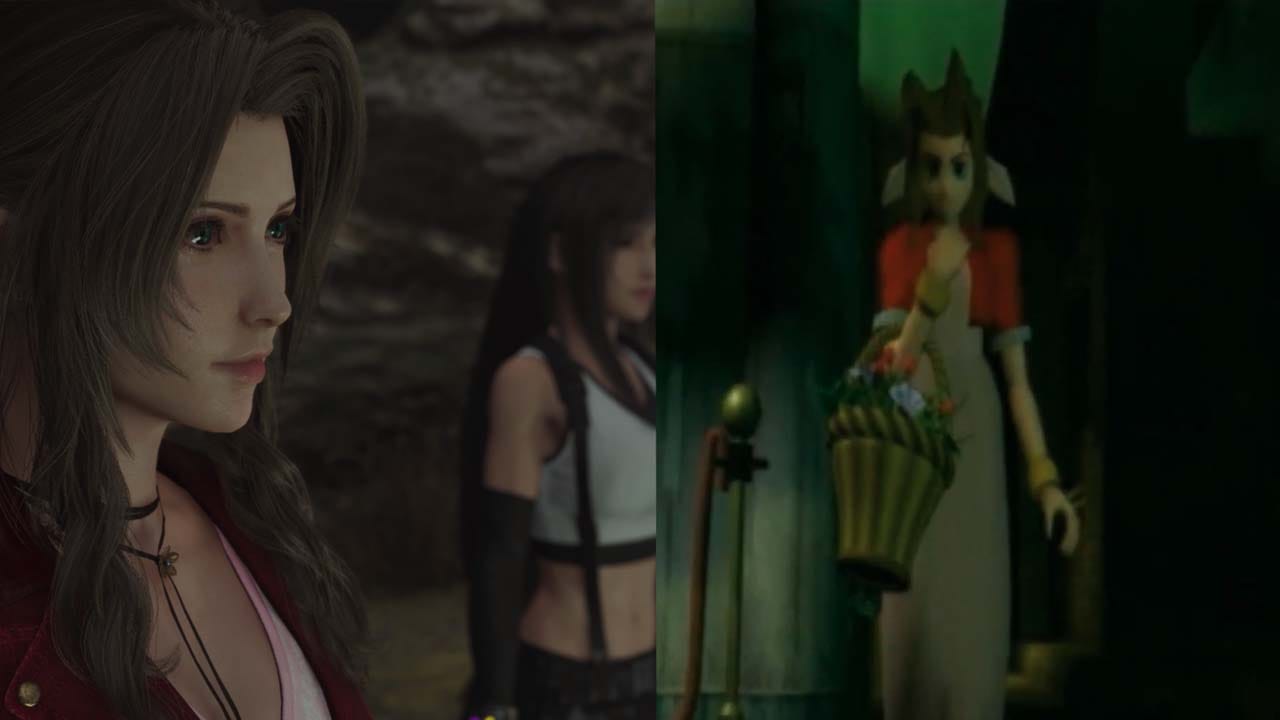
It helps that the characters themselves look so damn good. While they’re still on Unreal engine 4, Square Enix made sure that 80% of the visual budget went directly where it counts – Tifa’s chest. Jokes aside, there aren’t many games currently that have better looking models, and the fact that there are so many of them that all have such fine attention to detail is remarkable and should be commended. I can’t imagine how these iconic characters that were once a bunch of floating triangles fighting for their life to stay connected long enough to form a face could have been realized more perfectly today. More than that, the voice acting is incredibly strong amongst all the main cast, and much of the supporting cast as well. Suzie Yeung as Yuffie particularly stands out and, despite not always being my favourite character, delivers an insanely good performance that makes the others seem weak in comparison despite them also being remarkably well done all the same.
The game does have some performance issues, unfortunately, like its performance mode that even after a patch looks like someone smeared Vaseline all over your screen. Rebirth also has possibly the worst ghosting due to post-processing that I’ve ever seen in a game and it’s bad enough that it strained my eyes during many sessions. Otherwise, Rebirth is a great-looking game that in some instances will have you guessing if you’re looking at a purely in-game cutscene. The true and fully rendered cutscenes are unbelievably high quality, though, and it makes me wonder if they had cut down on some of the fluff, we could have maybe gotten some more of them in return. We’ve already acknowledged that that soundtrack is phenomenal, but as great as it is and as much as it brings to the game, I wish the audio engineers could learn how to mix for stereo so we could hear character dialogue because Rebirth is one of the worst examples of audio mixing in recent memory.
Final Fantasy VII Rebirth is a fine game that’s mired in frivolities that are in no small part there only in service of stretching the ill-equipped story across too many titles. Its hamstrung pacing makes caring about the main story more difficult than it should be with side content becoming a gamble on whether you’ll see more great character interactions or if you’ll just be running errands. As someone who comes into this having played and loved the original, it’s hard to gauge just how much of Rebirth’s story beats land without that nostalgia but I’d hazard a guess they don’t always earn their keep. It’s a shame, because perhaps the best reason for so dramatically altering the original story was to allow new players to enjoy the game without feeling like they’re missing something. What’s left then is an onslaught of minigames that are rarely integral to anything and a combat system that suffers from excess and success. Despite its faults, Rebirth brings with it beautifully realized, iconic characters that provide many endearing moments, all supported by one of the best musical scores gaming has to offer. If you’re already on board, Rebirth is unlikely to be the reason you step away from this Herculean effort, but with more questions than answers we’ll have to wait and see if the game(s) to come can stick the landing.

